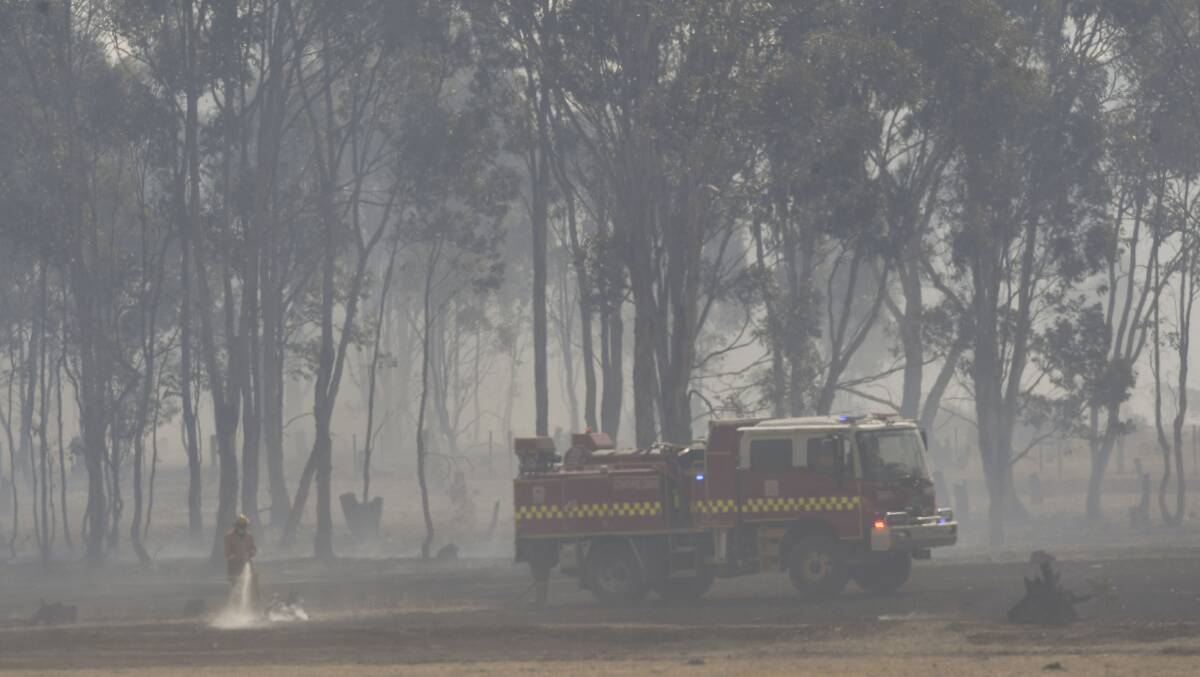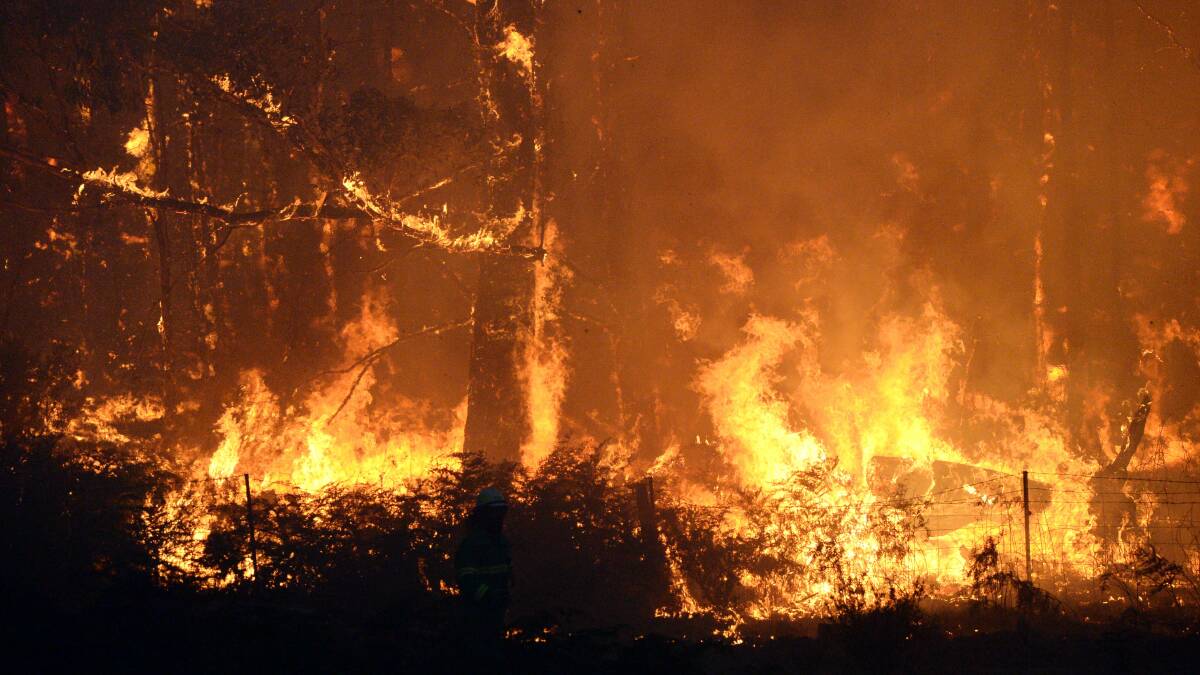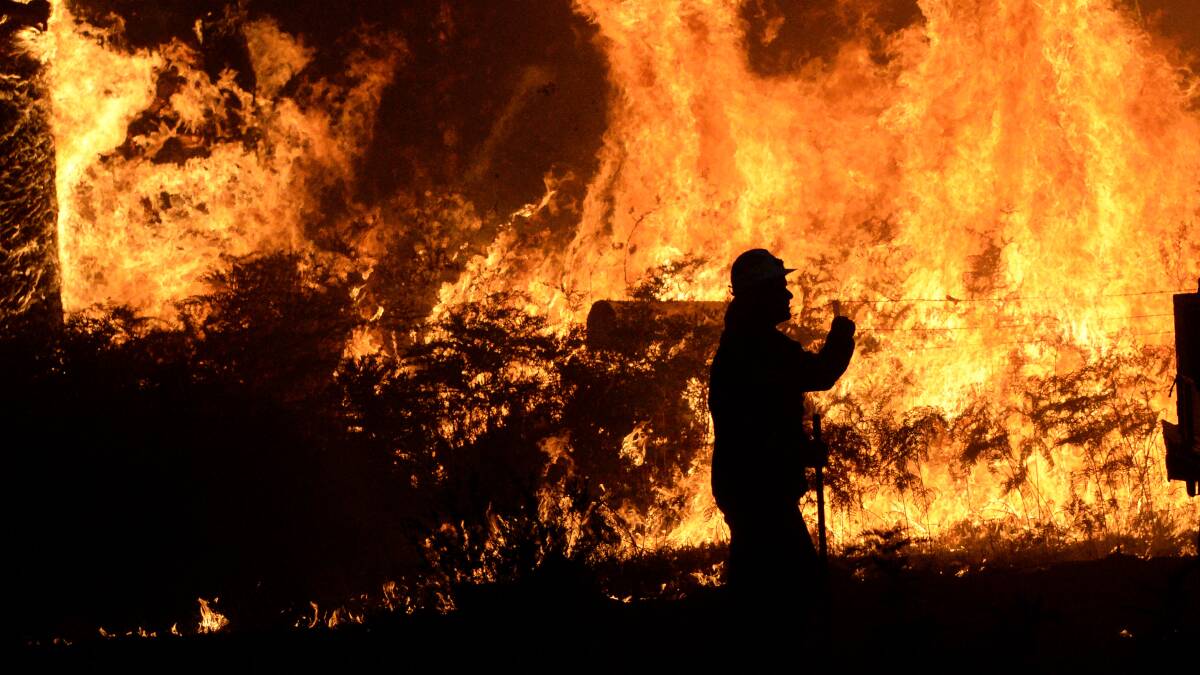
FIREFIGHTERS are steering Bendigo's future development away from bushland, as they fear increasing population could put people in the path of fire.
Subscribe now for unlimited access.
or signup to continue reading
The Country Fire Authority has warned the City of Greater Bendigo to avoid development in high risk bushland areas as part of its advisory role.
CFA North West Region Manager Community Safety David Allen said the authority worked with the city's strategic planners to advise on bushfire safety for future growth.
A bushfire management planning overlay applies to parts of Victoria that could be affected by extreme bushfire, dictating planning permits for certain types of development.
But Mr Allen said, all of Victoria was exposed to grass and bush fire risk.
Mr Allen said as government pushed for Bendigo to grow, the authority had done a lot of work with the council to develop in low risk locations.
He said while growth could take place in high risk locations, it was more problematic.
Mr Allen said more people were more exposed to fire as Bendigo had grown in the past 10 years.
The bush will one day still burn, there's no doubt about it. It's just a case of when. One day it will burn. The thing is to try and plan for that of least loss, of least impact, particularly human life.
- David Allen
He said the CFA had worked with strategic planners at the City of Greater Bendigo to plan growth
"Bendigo's going to grow, we know that it's a government intention to make it grow. That's fine, plan it well. Direct it to the lower risk, rather than the higher risk," Mr Allen said.
"We're saying to the municipality, 'You should direct your growth into the grassland areas primarily', because even though there is potential for grassfire, the bush is of higher risk.
"Also then to consider how you can prevent fires running into the urbanised areas."
LaTrobe University Adjunct Professor in the School of Psychology and Public Health Jim McLennan said developing areas on the edge of regional centres and capital cities were an "emerging headache" in terms of bushfire threat.
Huntly, Strathfieldsaye, Maiden Gully, Marong, White Hills and Jackass Flat are among the areas in the City of Greater Bendigo projected to grow the most by 2036. All sit on the edge of the city.
Professor McLennan said urban fringe developments in Bendigo encroached onto areas that would have been native vegetation and introduced grasses in the past.

He attributed increased risk to unfamiliarity with bushfire preparedness, increasing risk of ignition and dense housing on narrow streets, making firefighting response difficult.
Professor McLennan said Bendigo had always been regarded as a risky area for fire, but with the current dry conditions the danger areas would expand.
The current severe drought meant soil moisture was down, so fires burnt more fiercely, further drying soil in turn, creating a cascading problem, Professor McLennan said.
"With climate change, areas which we wouldn't have regarded as being terribly high risk, now clearly are," he said.
Professor McLennan said many people moving into cities' regional fringe had a limited knowledge of bushfire threat and how to maintain their property to reduce the chance of it catching alight.
For others the bush was the very reason they moved to the urban fringe, meaning they were reluctant to clear vegetation, Professor McLennan said.
He said risk of ignition - accidental or deliberate - was also higher when more people lived in an area.
But fire-proofing a city takes more than just planning new developments out of high-risk bushland.
Mr Allen said part of the CFA's planning input was about how to reduce the risk of fire within the existing Bendigo city.
Going back to 2009, fire came to within one kilometre of the Alexandra Fountain, Mr Allen said.
It had run along corridors of greenery through into the city.
"We want to try and restrict that, we don't want that to occur again," he said.
"Bendigo is fairly undulating, it is fairly timbered around it. There's bush all around it, there's bush intermingled. We want to manage that vegetation and manage the allotments."
Prevention could be as simple as putting golf courses in the right spot.
Instead of putting a golf course right in the centre of town, you might build it on the outside, to create a green, well-kept buffer, for instance, Mr Allen said.
Ultimately it came down to the right roads, the right infrastructure, vegetation management and water supply, for new developments, he said.

Mr Allen said Bendigo and central Victoria could be exposed to the risk of a big fire like in the state's east over the past weeks.
Victoria itself was one of the most fire-prone locations in the world, he said.
But Mr Allen said loss from fire in 15, 20, 30 years time could be changed by the decisions made today: where you put the community, where you put houses.
And many challenges today - settlement on the side of Mount Macedon, for instance - were legacies of decisions made in the past, when lower fire risk was less of a priority, he said.
Read more: Mask demand in Bendigo high after fires
"Black Saturday changed that forever. Some of the communities that are now vulnerable, probably would be challenging to have established in today's world," Mr Allen said.
Bendigo's bush was primarily made up of box iron barks, less challenging to fight fires in than stringy barks and candle barks, Mr Allen said.
But Mr Allen said, every summer had potential for a bushfire. The challenge was when fires and humans came together.

"Benidgo does have bush around it. Bendigo is a city within a forest basically. So all of those areas can be exposed to significant bushfire risk," Mr Allen said.
"The bush will one day still burn, there's no doubt about it. It's just a case of when. One day it will burn. The thing is to try and plan for that of least loss, of least impact, particularly human life.
"Don't put people in the bad spots, that's what we're saying. Put them in the low risk spots."
Professor McLennan said vegetation management on private property and house construction and design would have to be addressed in Australia going forward.
To reduce risk in Bendigo, people needed a higher level of knowledge about the nature of bushfire threat, he said.
Professor McLennan recommended people talk more about bushfire precaution, so preparation became the socially accepted responsible thing to do.
He said making basic information about fire danger and precautions easily digestible, for instance the dangers of radiant heat, would also help reduce risk.
To further reduce risk, Professor McLennan said local governments should work more closely with the CFA and Department of Environment, Land, Water and Planning to look at planning and regulations.
City of Greater Bendigo was contacted for comment.
Have you signed up to the Bendigo Advertiser's daily newsletter and breaking news emails? You can register below and make sure you are up to date with everything that's happening in central Victoria.


